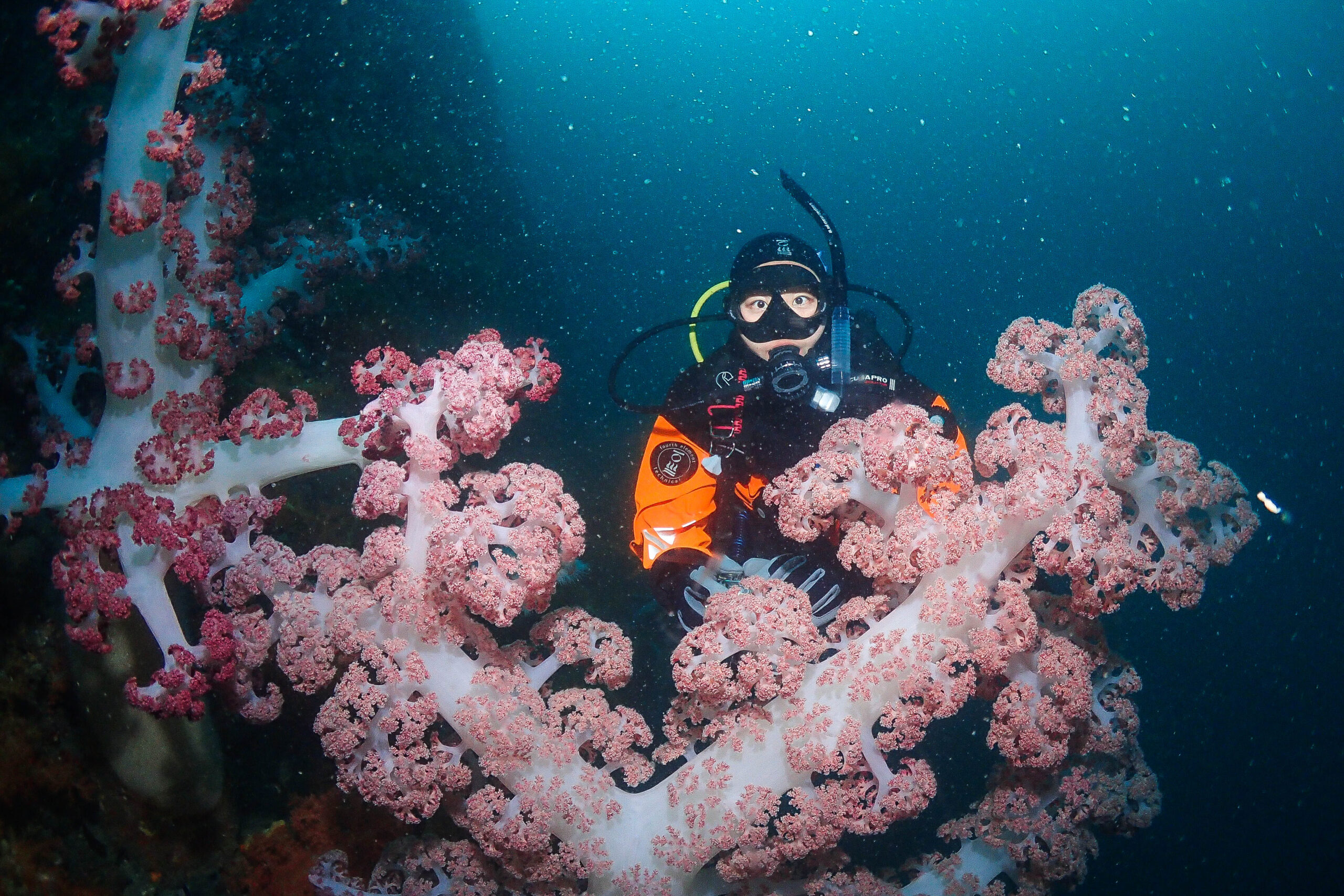As a diver, we are fascinated by the colorful marine life around us. But some creatures, like nudibranches, capture our imagination even more. These small, flamboyant nudibranches have a range of colors and patterns that make exotic corals look stunning. With more than 3,000 species worldwide, sea hares can live anywhere from the tropics to cold waters, and each species has unique characteristics adapted to its environment.

So why are they so interesting? Apart from their spectacular appearance, nudibranchs have interesting survival mechanisms. Although they don’t have shells, their bright colors serve as a warning to predators that they taste bad or are poisonous.
Previously, I wrote about the common nudibranches on Okinawa Island in Japan. In this article, we are going to Jeju Island in South Korea. Jeju Island, South Korea’s diving paradise, is a treasure trove for nudibranch enthusiasts. The island’s rich food resources, rocky reefs and volcanic seascape create an ideal habitat for these creatures. Let’s take a look at some of Jeju’s common species and discover why they are so remarkable.
Hypselodoris Festiva
An elegant guest in Jeju’s waters: Hypselodoris festiva. This species is immediately recognizable by the thin yellow stripes running along its body and its deep blue color. Red snout-like structures (rhinophores) and red gills complete its splendor.
In Jeju, they can often be found feeding on rocky reefs covered with sponges. They move slowly but make great poses for photographers. With their bright colors and graceful movements, they are a favorite among divers.


Chromodoris Orientalis
If nudibranches were fashion icons, Chromodoris orientalis would set the trends. It is quite striking with its black curved stripes and yellow spots adorning its transparent white or pale body. Its orange rhinophores and gills give it an elegant air.
This species is often seen in the shallow waters of Jeju, hiding among coral debris. Although small in size, it is easily recognized thanks to the contrast it creates on the seabed.


Phyllidia Ocellata
Phyllidia ocellata is like Jeju’s abstract artist. Its body is covered with yellow round bumps that look like round polka dots on a light white or pale gray background. Black rings around the yellow spots add even more drama to its appearance.
This nudibranch is often found in areas where sponges are abundant and can be seen clinging to rocks in choppy waters.


Phyllidiella Pustulosa
Looking for something more unusual? Phyllidiella pustulosa is the plant for you. Its dark body is covered with clusters of pink tubercles, giving it quite a distinctive look. It can be hard to spot when it blends into its surroundings, but once you notice its pink hues, you can’t take your eyes off it.
In Jeju, they are usually found in deep water, in areas where sponge colonies are abundant.


Phyllidia Varicosa
Phyllidia varicosa is one of the largest and most remarkable species around Jeju. Its blue-gray body is decorated with yellow-tipped ridges and striking black stripes. Bold and elegant in appearance, this species is like an underwater work of art.
This species is usually found in areas with strong currents and clings tightly to rocks with its sturdy body. It is a great creature for photographers, especially when captured with Jeju’s colorful underwater scenery.


Phyllidia Coelestis
Phyllidia coelestis, true to the meaning of its name, is a “celestial” beauty. It stands out with its bright blue body, yellow ridges and bold black stripes. Its compact size and bright colors make it a delightful discovery for divers.
Despite its elegance, this species is highly toxic to predators. Its bright colors are in fact a warning signal, showing how nature strikes a balance between beauty and survival.

Why are Jeju’s Nudibranches so Special?
The waters of Jeju Island offer a unique environment for nudibranchs to thrive. The volcanic topography provides countless small hollows and crevices for these creatures to hide and feed in. Nutrient-rich currents provide a constant source of food.
Nudibranches are not only beautiful to look at, but also play an important role in the health of ecosystems. Their abundance and diversity reflect the overall health of coral reefs and sponge populations. So, when you see a nudibranch, you are witnessing a small but vital part of the ocean’s complex structure.
Pack your diving gear, grab your underwater camera and head to Jeju to meet these magnificent Nudibranches. And remember, as divers, we have the privilege to witness these miracles, and with that privilege comes the responsibility to protect their habitats.
Stay Safe




